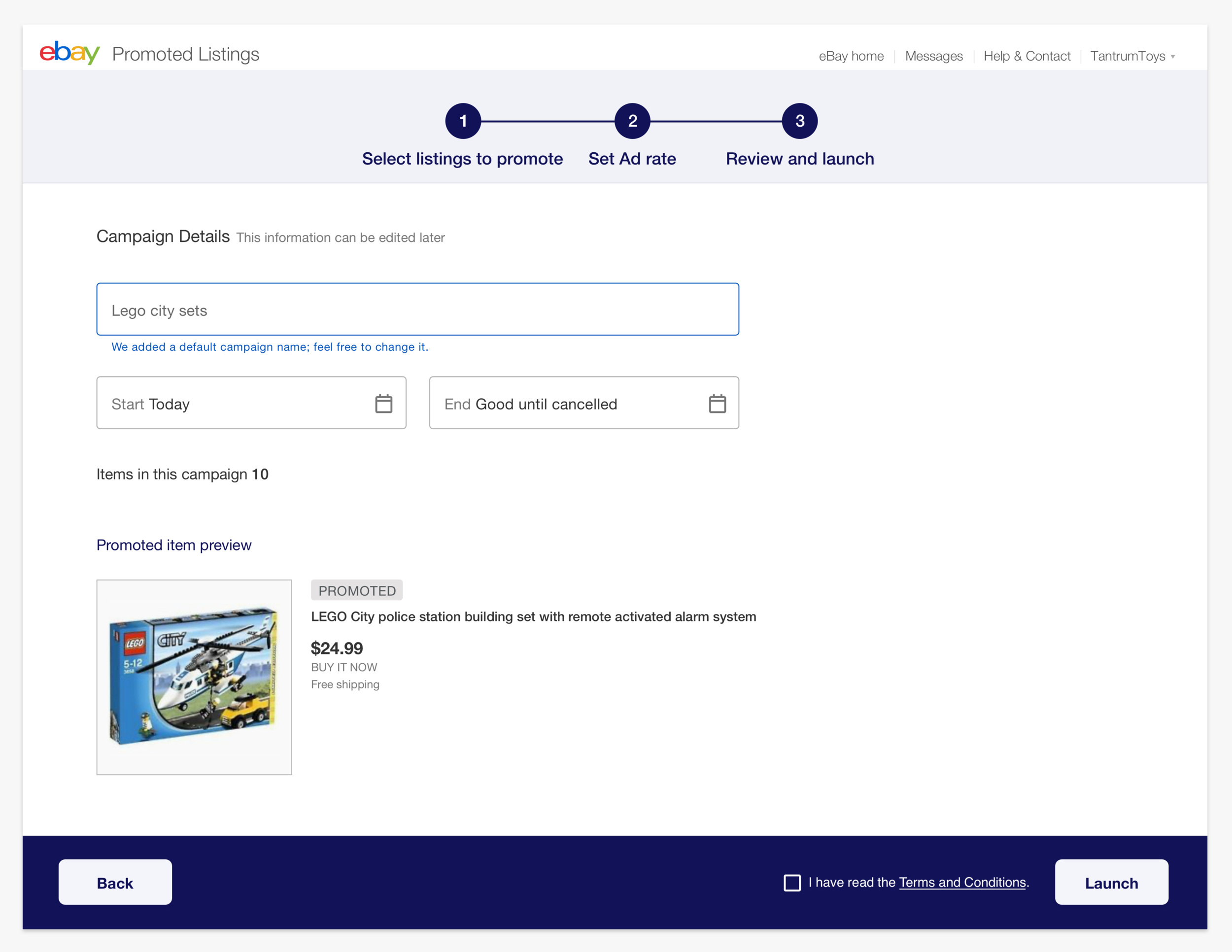Promoted listings - eBay
TL;DR: I redesigned Promoted Listings to help sellers’ gain more visibility among the billions of eBay listings. The new design increased seller adoption from .2% to 5% in its first week; now it generates hundreds of millions in commissions and helps sellers sell faster.
Challenge
Promoted Listings was used sparingly by the business owners due to these reasons:
The sellers did not want to pay the commission to promote the listings without the assurance that the items will sell.
Those who tried the feature had very low success rates.
The promotions tool required bidding on keywords while there was no guarantee that it would result in sales.
Most of the sellers assumed this feature was just another way for eBay to make money.
My role
At the 2015 eBay Seller Summit, I met with sellers where they talked about these issues with the platform. Business owners needed a way to stand out from the competition and sell more — but they did not want to pay anything upfront for the promotions although they didn’t mind paying a commission, after the item was sold. We took the initiative to improve this feature which has been a game-changer since then for many advertisers.
Goal : "You don't pay if you don't sell."
1. Cost-per-sale model
Product, business and design worked together to create a Cost-Per-Sale model that would replace the Cost Per Click pricing. It meant that sellers would only pay a percentage of the sale price after the sale was completed, so ultimately, it was a risk-free way to get their products noticed. Contrast this with paid ads on Google or Bing, where they charged for ad clicks, regardless if they sold or not.
2. Easy setup
We created a simple tool to take the guesswork out of the setup process which provides a complete, guided setup instead. The ad is built directly from the seller’s listing, and we used data to suggest which items to promote and at what cost.
3. Full control
Although eBay provides personalized product recommendations, sellers still have full control over the listings they want to promote, and how much they’re willing to pay for them.
4. Setting their Ad rate
The sellers could decide on the percentage of the sale price that they were willing to pay. And they got charged if the promoted ad was clicked and the item sold within 30 days.
4. Detailed reporting
With detailed campaign metrics and sales reports available (impressions, clicks, revenue, etc.), sellers can monitor campaign performance and buyer demand, and adjust the ads and pricing strategy accordingly.
The sellers loved the idea of not paying anything upfront and were able to create their promotions quickly. There were a few iterations needed to iron out UX issues before we test-launched this feature with 100 sellers and we saw a quick increase in adoption.
Results
Adoption rates increased from 0.2% to 5% in the first week and exceeded 15% in three weeks.
We quickly expanded it to other verticals and introduced additional ways to upload items from larger sellers using APIs and CSV uploads.
Promoted listings had crossed its yearly revenue target in less than four months and the adoption rates reached 15% on some verticals. The program has been successfully helping thousands of sellers promote their items on eBay. Most recently I heard that Promoted Listings generating close to a billion dollar in revenues.
Learnings: As designers we should leverage our ability to share customer stories describing the future state of our products and collaborate with our product and engineering partners to make these real world changes happen.






